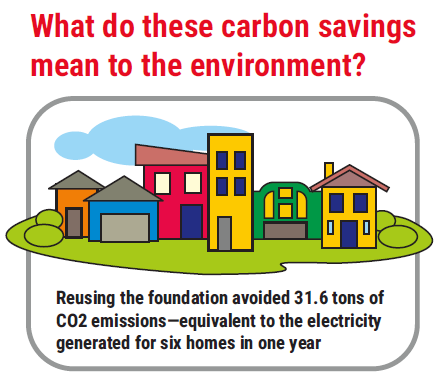Reuse of Foundations in an Old School Building

Authors: Marcel Bielefeld and Kevin van Velzen, Allnamics Geotechnical Experts, The Hague, the Netherlands
The Challenge
A few years ago, an old school building in Breda, a city in the southern part of the Netherlands, was converted into an apartment building. The structure was originally built in 1917 and subsequently expanded: first with the construction of the chapel in 1922, then the west wing extension in 1931 and finally the east wing extension in 1955.
The building is supported by various foundation types. The original structure has a shallow foundation underneath the east wing and the chapel, while a timber pile foundation was used for the remainder. For the wing extensions the same type of foundation was used as for the wing itself: a shallow foundation on the east side and a deep foundation with concrete piles on the west side.

The Solution
In its new function as an apartment building, the design loads are approximately 10% higher than the original design loads and therefore the existing foundation had to be re-evaluated. The simplest solution would have been to drive some 100 concrete piles to replace the existing deep foundation on the western part of the building. Given the soil conditions, these piles would have been 7 in (0.18 m) round piles with a 0.5 in (12 mm) steel casing and approximately 20 ft (6 m) long. Instead, as presented during the DFI SuperPile event in 2021, the contractor inspected the existing foundations and concluded that the foundation could be reused as is. This approach resulted in a reduced project cost, even after the cost incurred to inspect and test the existing deep foundations, and a shorter project schedule.

The Results
What was not highlighted in the 2021 presentation was the sustainability angle of this approach. Reusing the foundation, rather than installing new piles, eliminated the need for some 15.5 tons (14,000 kg) of steel and 30.6 tons (28,000 kg) of concrete in the piles alone, and the associated emissions of some 31.6 tons of CO2 — equivalent to the electricity generated for six homes in one year. While this may not sound like much, it is a reminder that in concrete foundation piles every cubic foot of concrete equals the emissions generated by approximately half a day of electricity used in a home. And when it comes to controlling emissions, every little bit helps.
